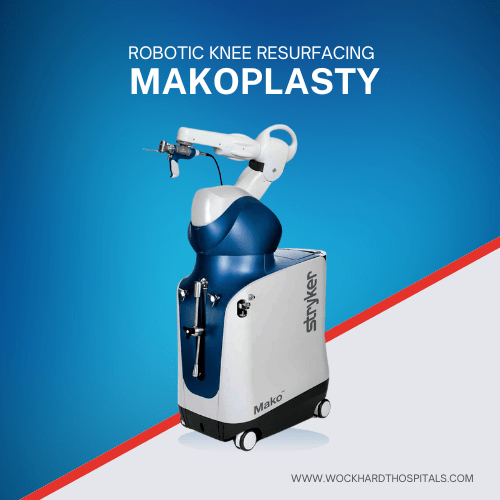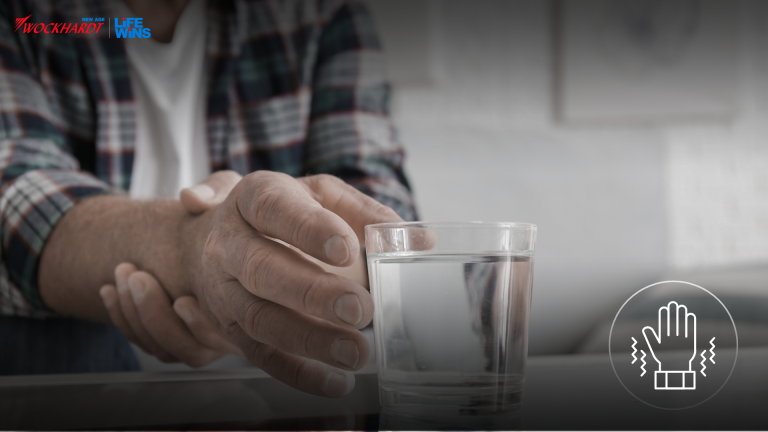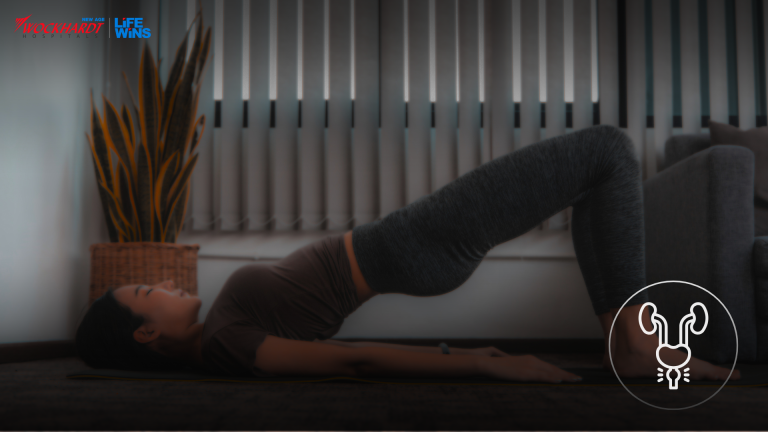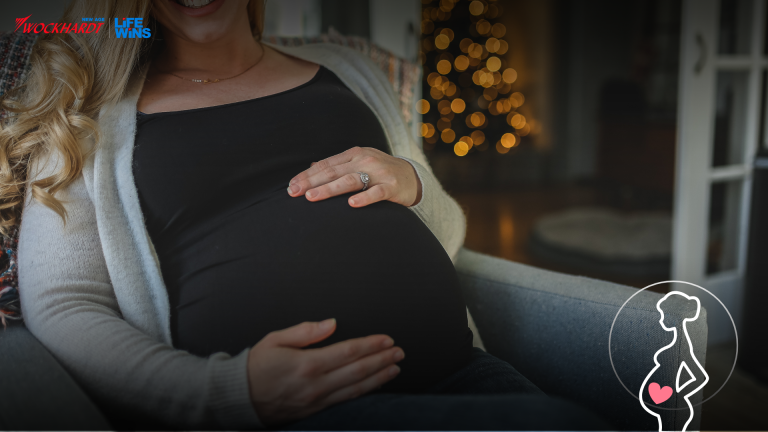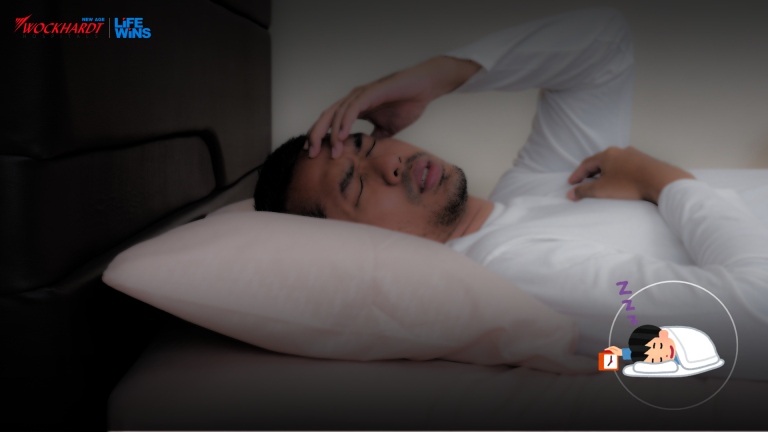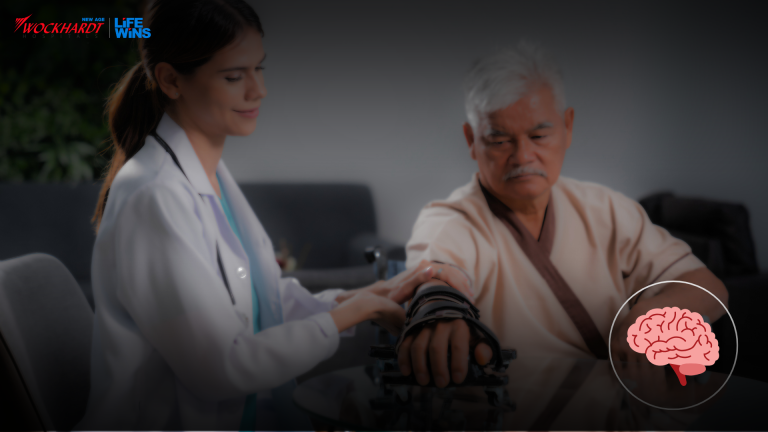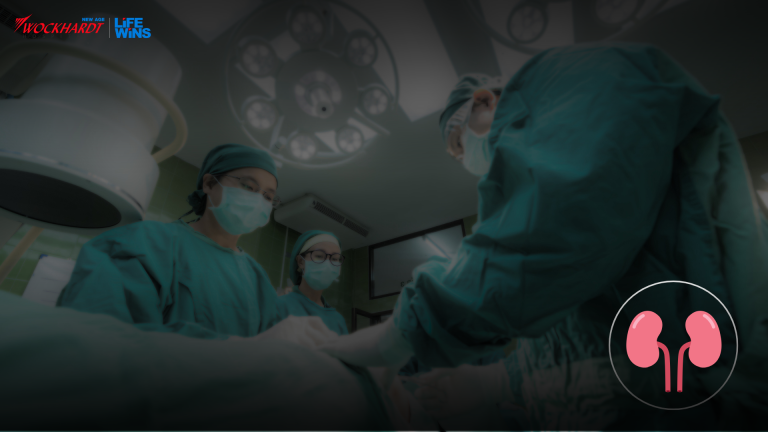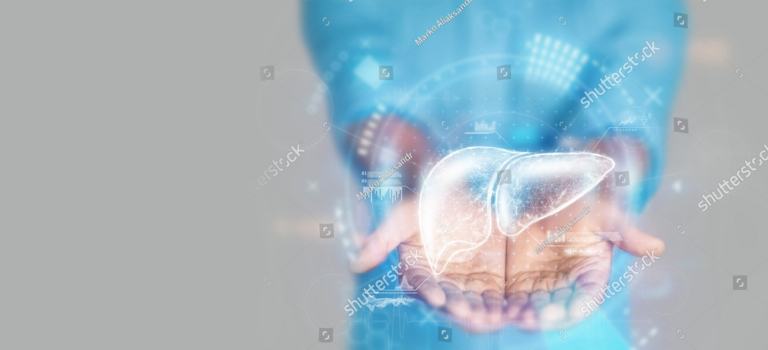Tips to Wash Fruits and Vegetables properly before consumption during COVID-19
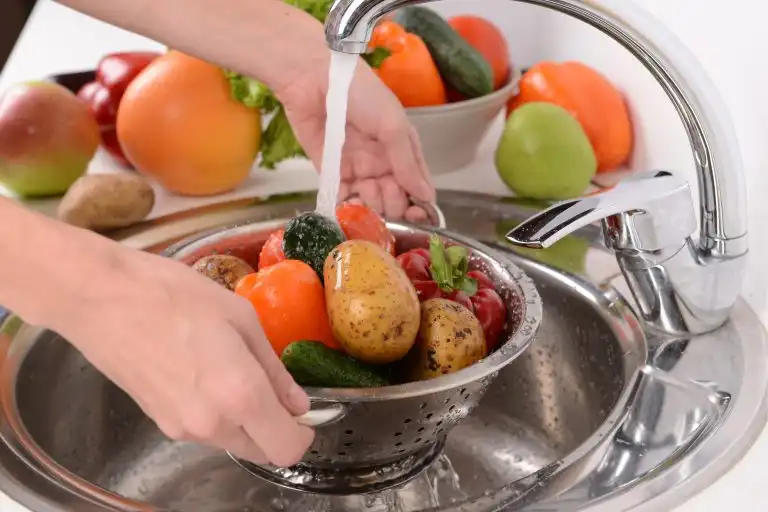
The novel coronavirus is not thought to be transmissible via food, but it can stay on surfaces for several days, on fruits, vegetables including packaging material for foods. It is thus necessary to take extra care and other precautionary measures while going grocery or vegetable shopping and storing them at home. Food safety and handling is of utmost importance right now. There are a number of people resorting to practices such as washing the grocery and fresh product. 1. Before washing product, wash your hands The importance of washing hands to prevent the spread of Covid-19 cannot be emphasised enough. Even when you are going to rinse vegetables, you must ensure that your hands are clean. Wash them for at least 20 seconds prior to cleaning fruit and vegetable product. It is a good idea to wash them afterwards too. 2. Rinse your product well in running water All the fruits and vegetable product that is purchased from the market can be rinsed in running water, followed by rubbing with hands. This is all that is needed to clean a majority of vegetables. Rinse product BEFORE you peel it, so dirt and bacteria aren’t transferred from the knife onto the fruit or vegetables 3. Do not use soap or any detergent The FDA says it is a complete myth that soap, detergent or any special liquid is required to clean product. Gently rub product while holding under plain running water. There’s no need to use soap or a product wash. If damage or bruising occurs before eating or handling, it is best to cut away the damaged areas before preparing or eating. 4. Use a brush or sponge if necessary While cleaning root vegetables like potatoes or carrots, a vegetable brush or sponge should be used to ensure all dirt is removed. 5. Certain vegetables and fruits require extra care Berries require extra attention during the cleaning process. Place them in a colander and rinse them under running water to remove pathogens. Similarly, lettuce and leafy greens should be placed in a bowl of cold water. Further, make sure that pre-cut items, such as bags of lettuce or watermelon slices, are either refrigerated, or kept on ice, both in the store and at home. The FSSAI also tweeted with some recommendations for food safety. 6. Handling your grocery items : 1. Groceries must be washed copiously with water. Anything that you bring from outside has to be considered to be potentially infected. 2. Before washing groceries, do wash your hands with soap and water for 20 seconds. 4. Make sure that you discard the container of groceries in a closed dustbin. This should be done after washing your hands. After having discarded the container, wash your hands again. 5. Wash your hands before and after cooking vegetables It is a good idea to cook your food thoroughly before consuming. 6.Keep the raw and cooked food separate, especially raw meat and fresh product.
Importance of Social Distancing
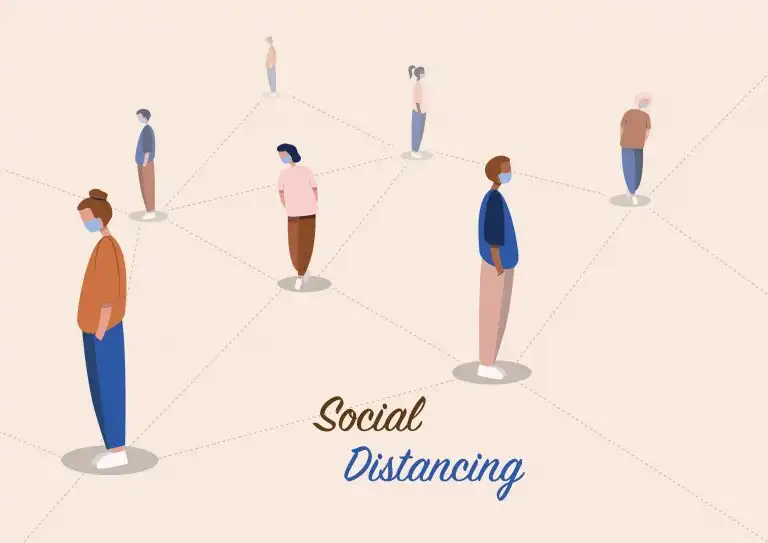
Amidst the pandemic of the corona virus outbreak one of the strongest recommendations advised by all the governments in the world whether it be uk, usa, and india is the practice of social distancing……in other words stay at home and be safe. Social distancing now is one of the greatest calls for humanity in these critical times. In this way countries are not only using this is as a preventive measure for getting the prevention but also reducing the infection and flattening the curve of infection to community. The lock down as it is being referred to will essentially reduce the viral load, reduce the burden of infected cases for treatment at various healthcare facilities and give time for the country to become prepared for any major outbreak. Social Distancing simply refers to avoiding close contact with other individuals in order to avoid catching the virus yourself and to avoid passing it on. According to the World Health Organization, you must maintain at least one metre or three feet distance between yourself and anyone who is coughing or sneezing for corona virus prevention. This needs to be done because whenever someone coughs or sneezes, they spray tiny liquid droplets from their nose or mouth which may contain virus. As we all know by now the coronavirus is not airborne. It is spread via respiratory droplets that might end up on your hands if they are coughed on or you touch surfaces that have been coughed on. If you are too close, then you are likely to breath in the droplets, including COVID-19 virus if the person who coughs near you has the disease. Also the virus rapid spread is likely due to the movements of people with no or very mild symptoms namely, those who are unaware that they even have the virus. So if movement of people in large numbers is reduced then it brings down the risk of community spread not only in the young but mainly in the elderly as well. That is why social distancing is such an important containment measure in this rapid spreading contagious disease. Factors that determine social spreads is how susceptible people are to infection, the number of contacts between people, and the duration of those contacts. Many cities have encouraged social distancing by banning large gatherings, encouraging telecommuting and closing schools. Governments have also advised avoiding crowded public transportation if possible. Social activities are now discouraged through out globally. Warning have been given of the norm to younger people who can becomes infected can spread the virus to an older person or someone who are immune-compromised due to age. If someone in your household has tested positive for the coronavirus, keep the entire household at home and infected person isolated for at least 14 days. India thus far has been successful in curtailing the community spread of the virus with the lockdown. Everyone should stay at home except for certain essential activities, such as grocery shopping or to seek medical care, or to perform work for essential businesses, government agencies, or public infrastructure construction. Our doctors and health care system are on the front trying to save lives by this process we reduce the burden of infected cases. A rapid escalation of infection can overwhelms our health care systems. “Flattening the curve” means dampening down that peak by reducing how fast the virus moves through the population. A slower spread means that on any given day, fewer people will need critical care for severe illness. Social distancing can also effectively extend to environmental precautions such as disinfecting often-touched surfaces that may pass on the virus. The best way to slow the spread is through public health measures that encourage social distancing. People need to understand that this is really, really serious. It’s up to you and me not to get infected and to not infect others. Prevent infection by staying in your house, washing your hands, avoiding people who are sick. This measure can be life-saving – not necessarily for you if you are 30 years old and healthy, but maybe for your parents, and certainly for your grandparents. YOUR SOCIETY NEEDS U LETS MAKE LIFE WIN..LETS PRACTICE SOCIAL DISTANCING…..
Myths and Facts on Coronavirus
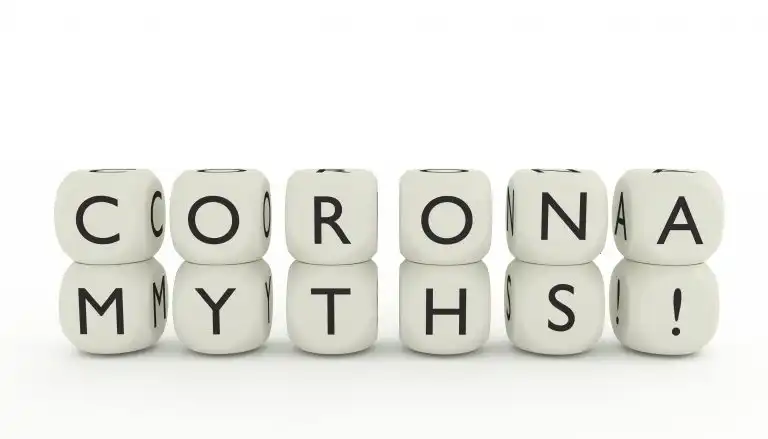
Coronavirus (COVID-19) outbreak in India has brought several misconceptions and rumors with it. Myths are spreading faster than the viral infection itself. At this crucial time, it is very important not to panic and information should be consumed from authorized sources only – healthcare providers, medical institutions, government portals, WHO, etc. are the authentic bodies. Myth 1 – Antibiotics can prevent and treat coronavirus infection. Fact – NO, antibiotics cannot treat viral infection. They are used to kill or inhibit the growth of bacteria. The Coronavirus strain – 2019-nCoV belongs to a large family of viruses and, therefore antibiotics cannot be the preventive measure. Myth 2 – Coronavirus affects older people only. Fact – People from all age group are susceptible to coronavirus infection. However, older people and people suffering from medical conditions such as asthma, diabetes, or any heart disease, or with low immunity are more vulnerable to this viral infection. Myth 3 – Regularly rinsing nose with saline can help prevent coronavirus infection. Fact – NO, regularly rinsing nose with water, saline or any chemical can’t prevent coronavirus infection. It may help in getting quick relief from the common cold and prevent other respiratory infections. Myth 4 – Putting on sesame oil on skin kills coronavirus or prevents them from entering the body? Fact – Sesame oil can’t kill or prevent coronavirus. Few chemicals that do kill COVID-19 on surfaces include bleach/chlorine-based disinfectants, ether solvents, 75% ethanol, peracetic acid, and chloroform. Myth 5 – Eating garlic help prevent infection of COVID-19 coronavirus. Fact – Garlic is healthy food and is loaded with antimicrobial properties but, it has no such antiviral effects which can cure coronavirus infection. Myth 6 – The pneumonia vaccine can prevent coronavirus infection. Fact – NO, the vaccine used for pneumonia does not provide any protection against the coronavirus infection. COVID-19 is a new virus and researchers are trying to develop an effective vaccination for the same. But, currently, we have no vaccine for coronavirus. Myth 7 – Applying cow dung or consuming cow urine can cure or prevent coronavirus infection. Fact – Absolutely NO, There is no scientific evidence that cow dung or cow urine can cure COVID-19. Myth 8: You can protect yourself from COVID-19 by swallowing or gargling with bleach, taking acetic acid or steroids, or using essential oils, salt water, ethanol or other substances. Fact :None of these recommendations protects you from getting COVID-19, and some of these practices may be dangerous. The best ways to protect yourself from this coronavirus (and other viruses) include: Washing your hands frequently and thoroughly, using soap and hot water. Avoiding close contact with people who are sick, sneezing or coughing. In addition, you can avoid spreading your own germs by coughing into the crook of your elbow and staying home when you are sick. Myth 9: A face mask will protect you from COVID-19. Fact : Certain models of professional, tight-fitting respirators (such as the N95)can protect health care workers as they care for infected patients . For the general public without respiratory illness, wearing lightweight disposable surgical masks is not recommended. Because they don’t fit tightly, they may allow tiny infected droplets to get into the nose, mouth or eyes. Also, people with the virus on their hands who touch their face under a mask might become infected. Myth 10: COVID-19 is just like the flu Fact :SARS-CoV-2 causes illness that does, indeed, have flu-like symptoms, such as aches, fever, and cough. Similarly, both COVID-19 and flu can be mild, severe, or, in rare cases, fatal. Both can also lead to pneumonia. Myth 11: Everyone with COVID-19 dies Fact :This statement is untrue. As we have mentioned above, COVID-19 is only fatal for a small percentage of people.The WHO also report that around 80% of people will experience a relatively mild form of the disease, which will not require specialist treatment in a hospital.Mild symptoms may include fever, cough, sore throat, tiredness, and shortness of breath. Myth 12: Cats and dogs spread coronavirus Fact :Currently, there is little evidence that SARS-CoV-2 can infect cats and dogs. The real driver of the outbreak is humans.” “Furthermore, wearing masks can give a false sense of reassurance and might lead to other infection control practices being ignored, e.g., hand hygiene.” The WHO recommend that people who are caring for someone with suspected COVID-19 should wear a mask. In these cases, wearing a mask is only effective if the individual regularly washes their hands with alcohol-based hand rub or soap and water. Also, when using a mask, it is important to use it and dispose of it properly. Myth 13: SARS-CoV-2 is just a mutated form of the common cold Fact :Coronaviruses are a large family of viruses, all of which have spiky proteins on their surface. Some of these viruses use humans as their primary host and cause the common cold. Other coronaviruses, such as SARS-CoV-2, primarily infect animals only . Myth14: The virus will die off when temperatures rise in the spring Some viruses, such as cold and flu viruses, do spread more easily in the colder months, but that does not mean that they stop entirely when conditions become milder. As it stands, scientists do not know how temperature changes will influence the behavior of SARS-CoV-2. Myth 15: Coronavirus is the deadliest virus known to man Although SARS-CoV-2 does appear to be more serious than influenza, it is not the deadliest virus that people have faced. Others, such as Ebola, have higher mortality rates. Myth 16: Flu and pneumonia vaccines protect against COVID-19 As SARS-CoV-2 is different than other viruses, no existing vaccines protect against infection.
How to Treat Varicose Veins?
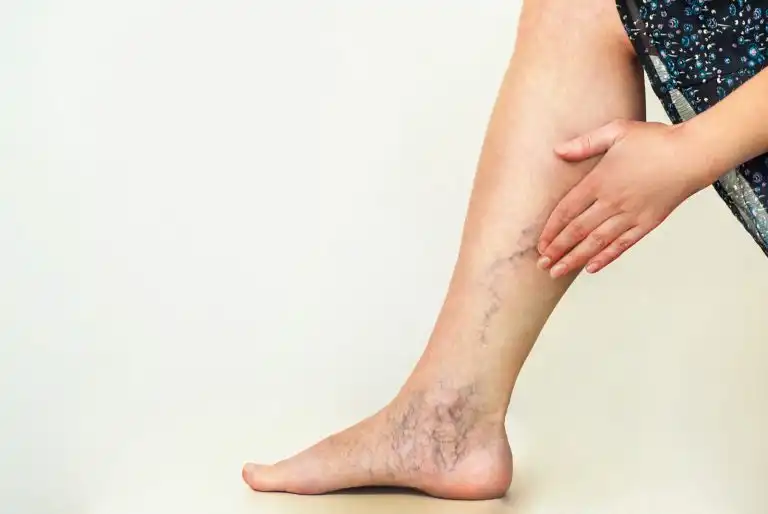
Do your legs sometimes feel heavy and achy? Do some of the veins on your legs appear swollen and twisted? If so, you may be experiencing varicose veins. Varicose veins are enlarged, swollen, and twisting veins, often appearing blue or dark purple in the legs and ankle region of the body. The truth is, it can progress into a more serious problem if left untreated. Who are at risk Varicose Veins? What is general cause: Veins are a part of your body’s circulatory system. They carry blood from your body’s tissues back to your heart where it picks up oxygen. Cause of varicose veins is generally due to faulty or leaky vein valves. Your veins have one-way valves that keep the blood flowing toward your heart. If the valves are damaged or weakened, rather than flowing back towards your heart blood can back up and pool in your veins, causing them to swell. What are symptoms associated with this condition: Conservative Treatment Surgical Management: Varicose vein treatments usually focus on making the disease vein swell and close permanently. The body routes blood to other veins. The treated vein eventually breaks apart and nearby tissue absorbs the remnants. The surgical treatment is carried out by a vascular surgeon or interventional radiologist. There are treatments available for those who want to rid themselves of varicose veins under the care of a vascular specialist. Sclerotherapy is one treatment option for varicose veins. During this procedure, a vascular specialist will make injections into the varicose veins to help reroute blood flow to healthier veins. Alternatively today, endovenous thermal ablation (EVLT) is carried. The treatment relies on high-frequency radio waves or laser heat to reroute blood to healthier veins and shut down problematic vein. Endovenous thermal ablation (EVLT) EVLA or EVLT, endovenous laser ablation is a minimally-invasive procedure that uses lasers to shrink varicose veins, precisely damaging the lining of veins so blood flow is prevented. EVLA is performed as an outpatient procedure, typically taking well under an hour to perform, with the actual laser treatment only taking a few minutes. Before your procedure, your vein will be carefully mapped using ultrasound technology so the treatment area can be clearly and precisely defined. The advantages of Laser Treatment (Endovenous Laser Treatment-EVLT) is that it is a minimally invasive latest treatment option available for varicose veins that does not require cuts (incisions) or stitches. It is a very safe procedure and leaves no scars. It usually requires a hospital stay for one day and patients can go back to work from the very next day of procedure. If you are experiencing signs and symptoms varicose veins please visit our Interventional Radiology department at Wockhardt Hospital for further treatment and management.
Seven Vows Towards Healthy Life
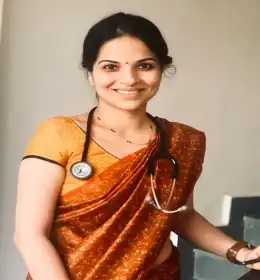
Vow 1: Prioritize Yourself It is important to accept yourself the way you are, and then put yourself infront. This is not being selfish, this is being doubly responsible. Once you become responsible towards yourself, other responsibilities become easier to handle. Happiness sneaks in . Vow 2: Eat Right By this, I mean eat in right quantities, and with right mindset. Whatever diet you choose, make sure that it suits your body constitution. Drinking adequate water is also a part of eating right. It is important to be fit, rather than lean. Vow 3: Sleep Well Sleep always takes a backseat in our life. But it’s time to bring it infront and address it aptly. Atleast six hours of sleep is essential and all the fitness experts will vouch for this one. Vow 4: Exercise Yes, there’s no excuse to hard work. However lethargic you feel, the only way is to get up and go. Begin with thirty mins of work outs and indulge into whichever type of exercise you love. The crux is consistency in doing it. Vow 5: Annual Health Check-Ups We need to know what’s happening to the physiology of our body. It is our right and responsibility too. Whatever routine we are following , whether it is right or needs modification, we have to keep a track of it. That’s exactly where health checks help. They keep you abreast with the physiological changes in your body. If reports give a positive nod, you are on right path. If they show some derangements, correcting and modifying the lifestyle and routine is the answer. Makes sense, isn’t it? Vow 6: Mental and Emotional Exercise We all remember physical part of exercise well, but forget the mental and emotional part of it. Mental fitness is pivotal as it helps to keep your mind calm by giving it some space to calm down . Meditation is a wonderful way of doing it. Meditation can vary from person to person. Do whatever makes you empty your mind of all thoughts . Focus on something that gives you spiritual happiness. Any creative activity can help in this one. For example, being a writer apart from being a doctor, my writing is my mediation. Creativity will help you carve “me” time for yourself. Emotional exercise is all about exhaling out all the negatives. Communication helps. Talk things out. If you feel stuck in an emotional turmoil, talk it out. Find a confidante, converse, seek a shoulder to lean on. Dialogue, discussion, dialect help in dealing with dilemmas and dramas of life immensely. It also eases the clutter in the mind and makes way for good thoughts. A sound mind and sound body go hand in hand. Reach out, really! Vow 7: Awareness About Common Diseases Know about your family medical history, so that you are vigilant about them right from the beginning. Teach your children about the same. Know about common disorders like diabetes, hypertension, thyroid problems, heart diseases, pregnancy related issues, menstrual irregularities. When I say know about them, it’s not just about signs and symptoms, but also about the risk factors leading to them. Apart from family history, factors like smoking, alcohol, irregular food habits, obesity have to be kept in mind. After all prevention is better than cure. Wow!! Seven vows towards healthy life!! They sound so sanctimonious already. All you have to do is, take the first step and you will already be on the road to health. The wings of your good health will automatically spread into your family and then flying high won’t be tough. Last but not the least, be positive and be grateful. Positivity is the biggest motivation in life and gratitude is most happy emotion in life. So dear all, embrace life with these seven vows and celebrate being alive, in true sense. By – Dr. Swapna Khanzode – Consultant-Internal Medicine and Critical Care
Kidney Stones: Symptoms, Causes, Types & Treatment
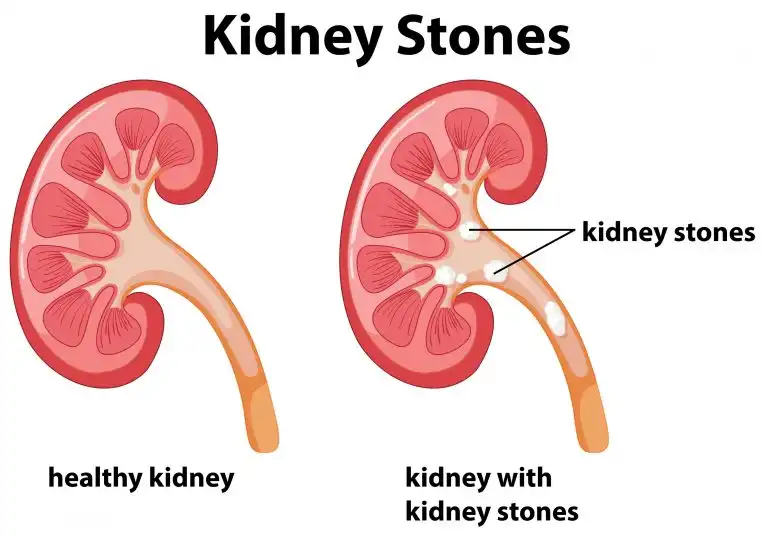
What is a Kidney Stone? A kidney stone is a hard, crystalline mineral material formed within the kidney or urinary tract. Most common symptoms of a kidney stone include flank pain and blood in the urine can be present also. Nephrolithiasis” is the medical term for kidney stones. One in every 20 people develops kidney stones at some point in their life. Kidney stones form when there is a decrease in urine volume and/or an excess of stone-forming substances in the urine. Dehydration is a major risk factor for kidney stone formation. Most kidney stones eventually pass through the urinary tract on their own within 48 hours, with ample fluid intake and do not need interventional treatment, Kidney Stone Symptoms Causes of Kidney Stone When there is a high concentration of minerals and other chemicals in your urine, such as uric acid, calcium, and oxalate, they combine to form crystals causing kidney stones. Subsequently, the crystals unite to form one or more hard deposits, sometimes known as “stones.” The main causes of kidney stone include: Types of Kidney Stones Kidney stones are broadly divided into five types. Based on your diet and family history, you may be at a higher risk of developing specific types of kidney stones. Let’s look at the different types of kidney stones: 1. Calcium Oxalate Stones: The majority of kidney stones are made of calcium, mostly calcium oxalate. Every day, your liver produces oxalate, or it may be absorbed through food. Metabolic disorders, including renal tubular acidosis are associated with higher chances of developing this type of stone. 2. Calcium Phosphate Stones: The cause of calcium phosphate kidney stones is changes in the regular operation of the urinary system. This kind of stone, which frequently develops concurrently with calcium oxalate stones, may be caused by kidney or urinary problems. 3. Uric Acid Stones: Kidney stones of this kind are found commonly. Consumption of large amounts of purine increases the synthesis of monosodium urate, which can precipitate kidney stones in some situations. Some types of kidney stones usually develop in families, suggesting a genetic predisposition. 4. Struvite Stones: A urinary tract infection can lead to the formation of struvite stones. These stones can occasionally occur with few symptoms or little warning, growing swiftly and becoming rather big. 5. Cystine Stones: People who have cystinuria, a genetic condition that causes the kidneys to discharge too much of a certain amino acid, are at risk of developing these stones. Risk Factors Associated with Kidney Stones: Preventive Tips to Avoid Kidney Stones: Diagnosis and Treatment of Kidney Stones: However if you are suffering from kidney stones do consult our Urology team for further guidance at Wockhardt Hospitals. FAQs on Kidney Stones Q. What dissolves kidney stones fast? Increasing water intake is crucial for dissolving small kidney stones quickly, as it promotes urine flow. Citric acid-rich fluids like lemon juice may help break down certain stones. Medications, such as tamsulosin or citrate solutions may also be prescribed to facilitate stone passage and prevent their formation. Q. How much water do I need to drink to flush my kidneys? The recommended water intake to flush kidneys varies, but a general guideline is – Women should strive to consume eight 200ml glasses of fluids each day. Men are advised to drink ten 200ml glasses of liquids each day. Individual needs, however, vary according to age, exercise level, and environment. Q. How do you sleep with kidney stones? Choose a posture that is comfortable and relieves pressure on the afflicted area when you are sleeping with kidney stones. Many like to use pillows for support or lie on their side with their knees bent. Q. Does walking help pass kidney stones? Walking and physical activity can help facilitate the passage of kidney stones by promoting movement and reducing stagnation in the urinary system. Staying active may ease the discomfort and encourage the stone to pass more easily. Q. Can kidney stones cause gas? Kidney stones do not cause one to develop gas; however, some associated symptoms like abdominal pain and discomfort can get confused with the signs of gassiness. But some of the dietary sources for gas, such as high-fiber foods may also contribute to kidney stone formation. Seek advice from a medical practitioner for an accurate diagnosis.
Causes of Swelling in the Leg
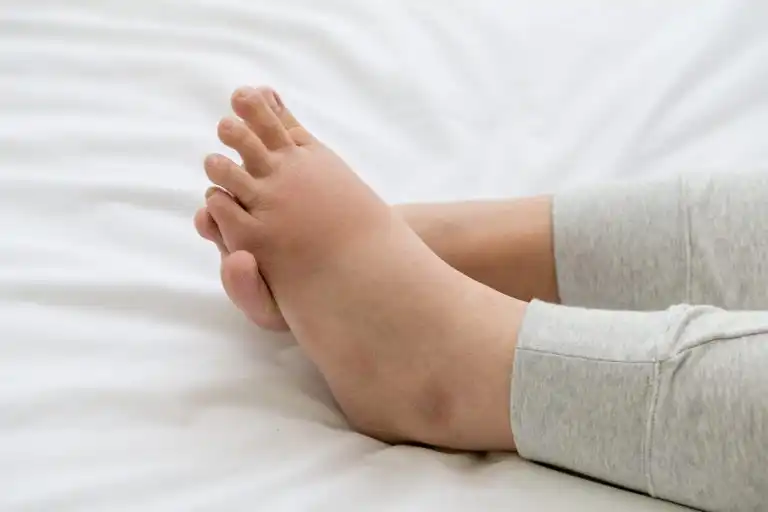
Leg swelling can occur in any part of the legs, including the feet, ankles, calves and thighs. Leg swelling can result either from fluid build-up (fluid retention) or from inflammation in injured or diseased tissues or joints. Sometimes leg swelling may be a sign of a more-serious disorder, such as heart disease or a blood clot. Complications include difficulty breathing, chest pain or other warning signs of a blood clot in your lungs or a serious heart condition. It can be caused by a problem with the circulatory system, the lymphatic system or the kidneys. Leg swelling caused by the retention of fluid in leg tissues is called oedema. Other cause could be due to being overweight, being inactive, after sitting or standing for a long time, or wearing tight stockings. Some Diseases Causing the Same Include: Other Causes of Swelling in Leg Include Leg swelling can also be caused by inflammation in leg tissues. Inflammation may be a Normal Response to Injury or Disease, this includes
Wockhardt Doctors Remove 1.5 Inch Bottle Cap Stuck In An Infant’s Throat
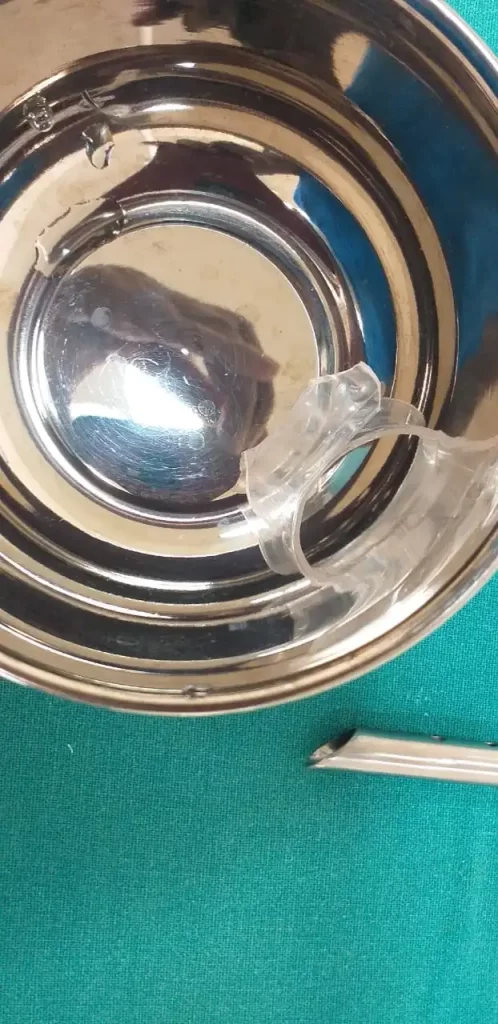
Mumbai: In a life-saving procedure, doctors from Wockhardt Hospital, Mira Road, pulled out a 1.5-inch bottle cap from a 7-month-old baby’s throat. Baby Jeet (name changed) suddenly encountered breathlessness and choked after swallowing the foreign body (FB). Baby Jeet (name changed), a resident of Mira Road suddenly developed difficulty in breathing and choked. The baby cried haplessly. His parents panicked and immediately rushed him to a local doctor who referred the patient to Wockhardt Hospital, Mira Road. Dr Neepa Vellimuttam , ENT surgeon at Wockhardt Hospital, Mira Road, said, “The patient reached the emergency department, the baby’s CT Scan revealed that there was a foreign body (FB) lodged in the oropharynx (the part of the throat at the back of the mouth behind the oral cavity), and hypopharynx which is the bottom part of the pharynx (throat), occluding the airway.” The baby was immediately shifted to Paediatric Intensive Care Unit under Dr Ankit Gupta . After carrying out a few other tests, the baby was taken to the operation theatre where the baby underwent rigid bronchoscopy procedure. Foreign body aspiration is accidental and sudden with a high mortality rate. It is a life-threatening condition and needs timely intervention. Dr Neepa explained, “Rigid bronchoscopy is a procedure for removal of foreign body in an emergency situation. The rigid bronchoscope is also known as an open tube bronchoscope, open tube, straight bronchoscope, or ventilating bronchoscope, and is a rigid, straight, hollow metal tube that is available in several sizes. Through this traditional method, access to the patient’s airway was gained with the help of optical forceps and camera to pull out the object, and we were surprised to see a plastic bottle cap measuring 1.5 inch.” The procedure was performed under general anaesthesia and lasted for about 5 minutes. The baby was out of danger, shifted in the general ward, and discharged the next day. The baby has started accepting feeds now. “The baby choked and was crying continuously. We were clueless about the sudden change in his behaviour. Fortunately, the baby received a prompt treatment at Wockhardt Hospital. We thank the doctors for helping our baby breathe freely again. We are happy to see our baby pain-free.” Patient father Raman Kumar (name changed). Source: https://medicaldialogues.in/ent/cases/wockhardt-doctors-remove-15-inch-bottle-cap-stuck-in-an-infants-throat-63202
83-Year-Old Woman Suffering From Heart Attack Successfully Treated With TAVR Procedure
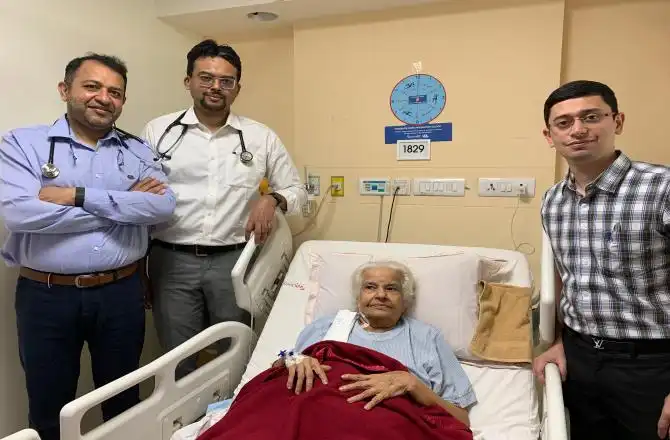
A team of skilled doctors consultant interventional cardiologists Dr Ankur Phatarpekar, Dr Haresh Mehta, Dr Kayan Siodia alongwith cardiothoracic surgeon Dr Mangesh Kohale , interventional radiologist Dr Bhavesh Popat, anaesthetist Dr Neeraj Barnwal, physician Dr Brajesh Gupta and Consultant Physician Dr Zaheer Virani successfully treated an 83-year-old woman suffering from a heart attack. She got a new lease of life through a minimally invasive, life-saving procedure called Transcatheter Aortic Valve Replacement (TAVR) wherein a Third Generation Leak-Proof Valve was placed high up in the heart to regulate the obstructed blood flow to the heart, which improves the survival chances of the patient. 83-year-old Dnyaneshwari Swami, a resident of Mumbai suddenly encountered chest pain and shortness of breath. The family panicked and admitted her to Wockhardt Hospitals in Mumbai Central wherein she was diagnosed with a heart attack. Doctors carried out Angioplasty and saved her life. Dr Ankur Phatarpekar said, “On arrival, the patient underwent, ECG & 2DEcho where it was revealed that she suffered from a heart attack and one of her three arteries of heart was occluded (occlusion means the partial or complete obstruction of blood flow in a coronary artery). The patient also had other co-morbidities such as low blood pressure and kidney problem. The blood clot was removed using aspiration, and the affected session was treated using a drug-eluting stent, and she took about 7 days to recover completely. During the 2DEcho it was also found that the patient had severe Aortic Stenosis (that is a narrowing of the aortic valve opening). It restricts the blood flow from the left ventricle to the aorta and may also affect the pressure in the left atrium (one of the four chambers of the heart, located on the left posterior side) with heart-pumping of 35 per cent.” Instead of performing high-risk open-heart surgery, a novel transcatheter aortic valve replacement (TAVR), was carried out to aid the normal function of heart valves. “TAVR is a minimally invasive procedure to replace a narrowed aortic valve that fails to open properly (aortic valve stenosis). It is a boon for the patients who are not candidates for other treatment options because of their age, overall health or other medical issues. The goal of TAVR is to implant a new, artificial valve to take over the job of the damaged aortic valve,” explained Dr Phaterpekar. Dr Haresh Mehta added, “A catheter was used to manoeuvre and place the new Third Generation Leak-Proof Valve, which slips inside the old valve. Once placed, the new valve expands and pushed the damaged valve parts out of the way and regulated the blood flow into the aorta. The shallow implant of the valve was carried out, placing it high up due to the lack of calcium in the patient. Third Generation Leak-Proof Valve is the first-of-its-kind valve used in Western India at Wockhardt Hospitals. It helps improve the survival rate of the patient. Normally in such cases, there are 15 per cent to 20 per cent, chances of causing death. With the help of new technology, chances have come less than 1 per cent.” The procedure took about 45 minutes. “In this procedure, there is only a small puncture instead of a large incision and it is less painful. There are a minimized hospital stay and a speedy recovery. In three days, the patient could breathe easily, and her co-morbidities have been tackled,” said Dr Phaterpaker. “After I suffered a heart attack, I was immediately rushed to Wockhardt hospitals. Since my family was aware of the symptoms, I could receive timely treatment. I thank the doctors and the team at Wockhardt Hospitals for helping me get back on track,” concluded patient Dnyaneshwari Swami.
New technique of joint replacement surgery a boon for elderly patients at Wockhardt hospital, Nashik
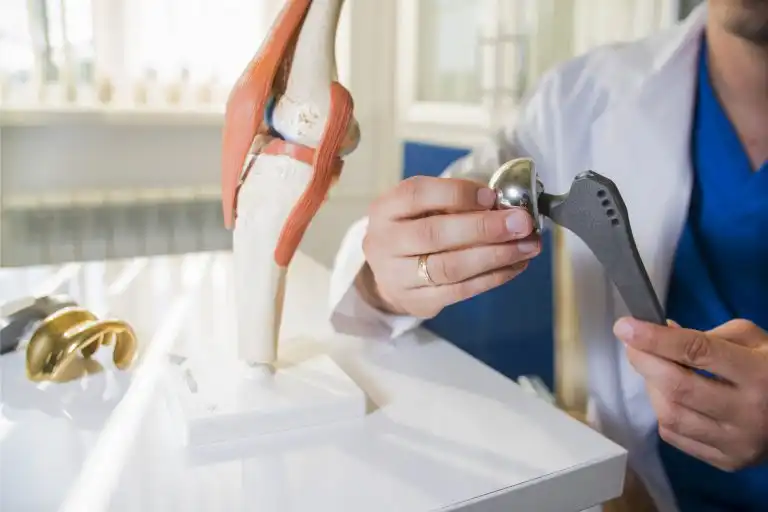
Novo Technique” a method developed by Dr Jayesh Sonje, Wockhardt Hospitals, Nashik, enables to perform successful Knee transplant in just 25 minutes with just a 15 cm incision. The surgery can be done on elderly patients who are suffering from severe joint pain. Arthritis increase with age and affects weight bearing joint Arthritis cause weakness in the bones .Elderly patient s are affected the post. The benefits of this surgery are seen in the young as well as old. Prior precautions are taken prior to the surgery. It also gives a sense of comfort other patient as the post-operative management is short and recovery is faster than regular surgery. Post- operative drugs given to the elderly for pain and infection is less causing fewer side effects to kidney and liver. The technique involves a smaller incision as compared to the conventional surgery therefore reducing blood loss and early healing. Dr Sonje said “It takes only 30 to 40 minutes for a surgery on one knee. It requires fewer instruments. Main Benefits of surgery:






